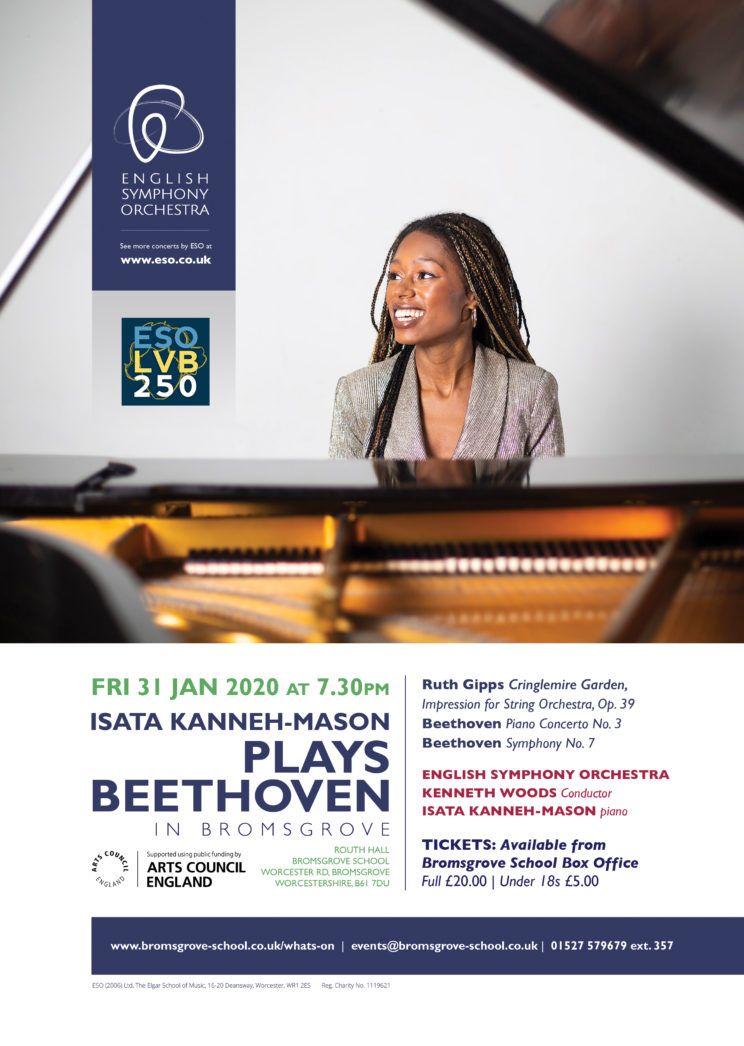LUDWIG VAN BEETHOVEN (1770-1827)
Piano Concerto No. 3 in C minor, Op. 37
Beethoven’s Third Piano Concerto had one of the longer gestations of any of his works. He first began sketching ideas for the piece in 1796, and did most of the main work on the piece in 1800, making it very much a work of his “early” period. Nevertheless, by the time of the work’s long-awaited premiere in 1803, the work still wasn’t really completed.
Beethoven himself was the soloist, and his page turner, the young assistant conductor Ignaz von Seyfried, said the experience of turning pages for Beethoven was rather unsettling:
“…heaven help me! – that was easier said than done. I saw almost nothing but empty leaves; at the most, on one page or another a few Egyptian hieroglyphs wholly unintelligible to me were scribbled down to serve as clues for him; for he played nearly all of the solo part from memory since, as was so often the case, he had not had the time to set it all down on paper. He gave me a secret glance whenever he was at the end of one of the invisible passages, and my scarcely concealable anxiety not to miss the decisive moment amused him greatly, and he laughed heartily at the jovial supper we had afterwards .”
Beethoven finally got the solo part on paper and the Concerto was published in 1804 as opus 37, a date of publication which belies its status as a work of his pre-Heiligenstadt youthful heyday. But it’s important in looking at Beethoven’s creative arc not to overstate the importance of his three compositional periods, and it is particularly important not to understate the importance of his early music, which cedes nothing to his middle and late periods in inspiration, craft, temperament or spirituality.
And, so we can see that , already in this relatively early work, the key of C minor had taken root in Beethoven’s mind as very much the same key of drama, violence and foreboding that it is in the Fifth Symphony and the last Piano Sonata, opus 111. In fact, C minor seems to have had special significance for Beethoven from his first published works, the three Piano Trios, opus 1, the last of which is also in C minor and very much in the same mood.
Mozart wrote only two piano concertos in minor keys, those in D minor and C minor. Both were favourites of Beethoven, who wrote his own cadenzas for them. If Mozart’s C minor Concerto provided inspiration, young Beethoven still forged his own path. The first movement of the Third Piano Concerto is nearly seventeen minutes long, far longer than any movement in the concertante works of Mozart or Haydn, and yet it still feels extremely taut , most of it built out of the very simple yet menacing theme which opens the piece.
The second movement is a Largo in the very distant key of E major. Beethoven seems determined to highlight the strangeness of this exotic harmonic landscape by telling the pianist to keep the pedal down almost continuously in the open bars, blurring the harmonies in a way that remains shocking to many modern ears (and is made more shocking on a modern piano). This is the youthful Beethoven at his most spiritual and profound, not far at all from the mood of the slow movement of the Ninth Symphony.
The third movement, Rondo: Allegro, is in a musical form in which a simple, memorable tune keeps returning between ever-more-complex and far-ranging musical “episodes.” Most rondo themes in Beethoven, Haydn and Mozart’s music are rather cheerful – not this one. This is a decidedly grumpy rondo, built on an obsessive, gruff theme. The first episode is heralded by a fierce minor key fanfare in trumpets and timpani. For a moment we begin to question whether this movement will have any of the playful wit we associate with a good rondo, but Beethoven quickly parts the clouds and , even in the first episode, there is much that is playful. However, the clouds soon re-darken the skies, the Rondo theme returns and all again seems grim. Beethoven cycles back and forth between darkness and light several more times before unveiling his master stroke, an absolutely magical transformation of the Rondo theme itself into the major, once and for all sending the shadows away and allowing the work to end in pure affirmation.
– Note by Kenneth Woods

Thank you for this post Ken…you know my obsessive nature and the Beethoven Piano Concertos are one of the few pieces in the literature that I have yet to apply that OCD nature to. I cant seem to get beyond the notion (squarely in my own head of course) that these are Beethoven’s equivalent of “Day Tripper” or “I Wanna Be Your Man”…pieces written solely for the commercial purposes of the day. They seem to not possess the same depth and strident originality that Luddie’s more monumental works clearly have…and I’m in no way saying this is a terrible thing. It’s just that, to me, I believe I have been brainwashed to think that every piece Beethoven created MUST BE EARTHSHATTERINGLY AWESOME. And the Concertos just arent “all that”. But your insight here may allow me to relax this misguided notion and approach these from a different angle. Ill give the whole set a “spin” soon and see where I end up. Now the question becomes: “Vinyl” or “Digital”?? Decisions, decisions!